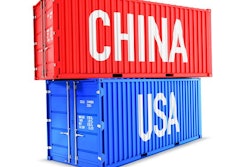
China Makes Largest U.S. Sorghum Purchase Since April, But Woes Continue
China purchased two million bushels of U.S. sorghum for the week ending July 11 despite a 25% tariff still being in place.
The purchase comes as trade talks between the two nations continue.
Market participants hope this is a signal additional purchases of sorghum and other commodities are coming.
Small purchases could continue in the near term to keep both parties interested in talks and to keep China’s supplies at needed levels.
What It Means for the U.S. Farmer: At FBN, we do not believe the trade war between the U.S. and China will be over soon. China may continue to make small purchases of U.S. products, but significant purchases of U.S. commodities, including corn, soybeans, wheat, cotton, and sorghum, likely will be limited in the near term relative to historical levels.
China and Russia Expand Trade Relationships
China and Russia continue to strengthen trade relationships with Russia proposing to fill any soybean gap from the US.
Within the last 60 days, Russia and China have vowed to increased future domestic soybean production.
For China, the focus has been switching corn acres to soybean acres while Russia’s focus is on increasing soybean area.
Russia’s soybean production is light relative to major exporters, but its production has expanded in recent years with this year’s harvest forecast at 4.3 million tonnes (169 million bushels) and exports projected at 900 TMT (35 million bushels).
In recent years, Russia has surpassed others in the market as the key wheat exporter and has increased wheat shipments to China, though totals remain light.
Timing of these discussions is not a surprise as China deals with pork losses due to ASF.
What It Means for the U.S. Farmer: From a headline prospective, any attempts by China to reduce their demand for U.S. soybeans and shift their import program away from the U.S. is not bullish for the farmer. However, attempts by Russia to reduce the U.S.'s role in the global soybean trade could take years. The focus for most of the U.S. soy producers in 2019 should be on local production/basis opportunities rather than world trade.
Argentina Corn Harvest Picks Up Pace, Wheat Plantings Advance
After a slow start to the harvest season, Argentina’s harvest pace advanced to 61% complete this week.
Rains have limited advancement of the harvest season, but recent dry weather helped harvest progress.
Most in the market look for Argentina to harvest upwards of 48 million tonnes with many in the industry around the 50-million-tonne level.
Dry weather also contributed to a boost in wheat planting advancement with the planting season nearly complete.
Argentina’s wheat production is expected to be larger, year over year, which could hamper U.S. export prospects.
What It Means for the U.S. Farmer: At FBN, we expect Argentina to continue to be a major U.S. competitor for both corn and wheat exports for 2019/20. Argentina’s wheat exports likely will be higher, year over year, while corn exports are expected to be down a couple of million tonnes. Corn exports are not expected down sharply enough to pull US prospects much higher. As Argentina’s harvest expands, Argentina’s FOB prices could become even cheaper relative to the US. Argentina FOB prices already are at a sharp discount to the US.
The risk of trading futures, hedging, and speculating can be substantial. FBN BR LLC (NFA ID: 0508695)










